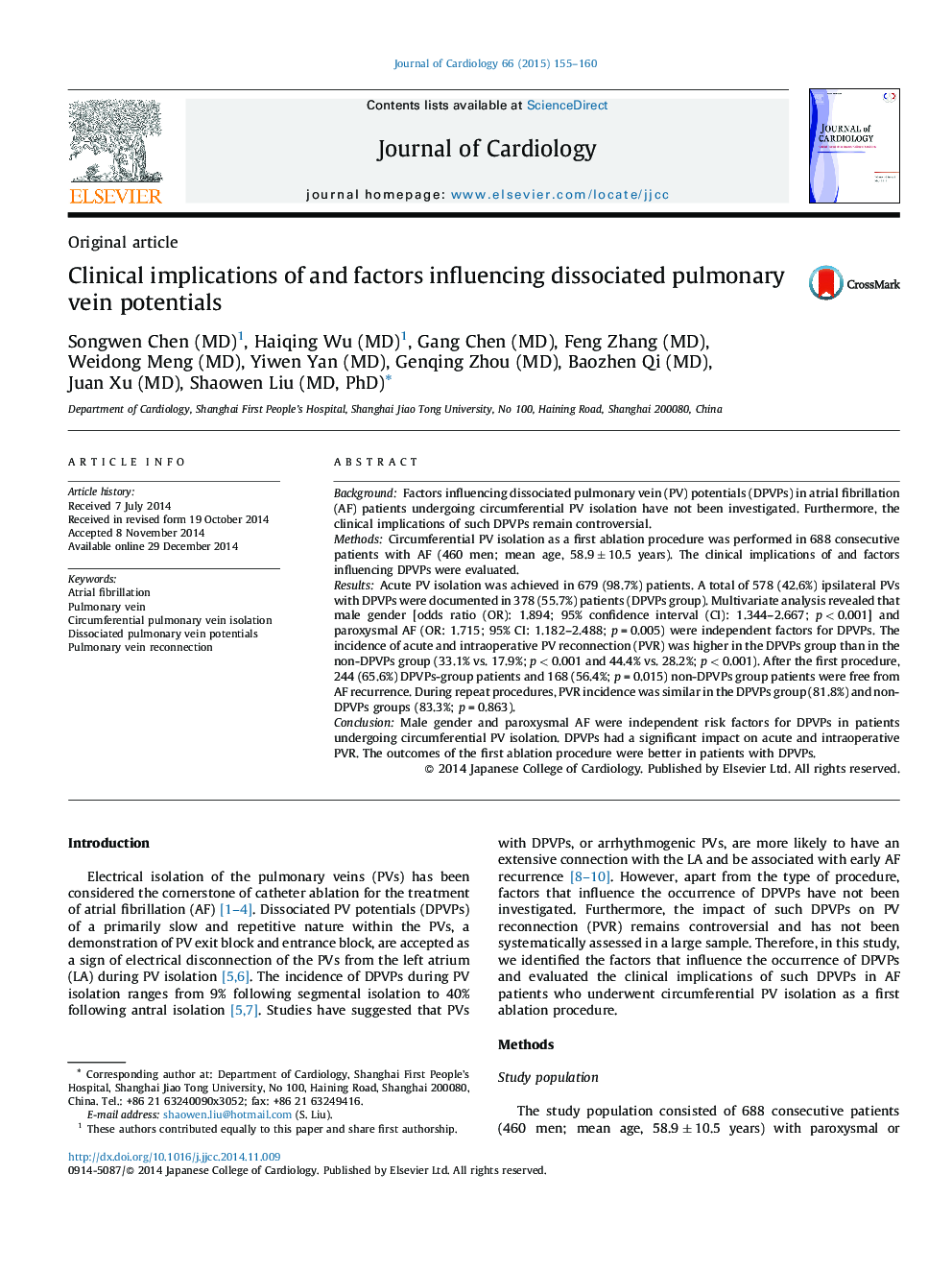| Article ID | Journal | Published Year | Pages | File Type |
|---|---|---|---|---|
| 2962948 | Journal of Cardiology | 2015 | 6 Pages |
BackgroundFactors influencing dissociated pulmonary vein (PV) potentials (DPVPs) in atrial fibrillation (AF) patients undergoing circumferential PV isolation have not been investigated. Furthermore, the clinical implications of such DPVPs remain controversial.MethodsCircumferential PV isolation as a first ablation procedure was performed in 688 consecutive patients with AF (460 men; mean age, 58.9 ± 10.5 years). The clinical implications of and factors influencing DPVPs were evaluated.ResultsAcute PV isolation was achieved in 679 (98.7%) patients. A total of 578 (42.6%) ipsilateral PVs with DPVPs were documented in 378 (55.7%) patients (DPVPs group). Multivariate analysis revealed that male gender [odds ratio (OR): 1.894; 95% confidence interval (CI): 1.344–2.667; p < 0.001] and paroxysmal AF (OR: 1.715; 95% CI: 1.182–2.488; p = 0.005) were independent factors for DPVPs. The incidence of acute and intraoperative PV reconnection (PVR) was higher in the DPVPs group than in the non-DPVPs group (33.1% vs. 17.9%; p < 0.001 and 44.4% vs. 28.2%; p < 0.001). After the first procedure, 244 (65.6%) DPVPs-group patients and 168 (56.4%; p = 0.015) non-DPVPs group patients were free from AF recurrence. During repeat procedures, PVR incidence was similar in the DPVPs group (81.8%) and non-DPVPs groups (83.3%; p = 0.863).ConclusionMale gender and paroxysmal AF were independent risk factors for DPVPs in patients undergoing circumferential PV isolation. DPVPs had a significant impact on acute and intraoperative PVR. The outcomes of the first ablation procedure were better in patients with DPVPs.
